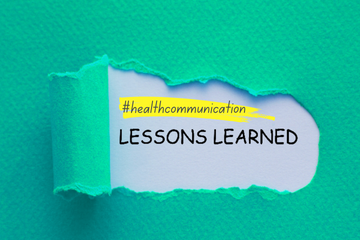You’re reading Lessons Learned, which distills practical takeaways from standout campaigns and peer-reviewed research in health and science communication. Want more Lessons Learned? Subscribe to our Call to Action newsletter.
Health messages are regularly designed to bring out emotions that motivate people to change their behavior and share the message. However, little attention has been given to how shifting emotions can affect how persuasive a message is and how much people share the message. To better understand this, a team at UC Santa Barbara randomized four different messages about texting and driving to a group of 333 undergraduate students:
- Message 1: A young woman responds to a text message while driving, resulting in a terrible crash.
- Message 2: A young woman receives a text message and pulls over to respond.
- Message 3: Combination of messages 1 and 2, with message 1 first.
- Message 4: Combination of messages 1 and 2, with message 2 first.
All messages featured language about how it’s easy to pull over, and how viewers should talk to their friends and family about texting and driving (DOI: 10.1080/10410236.2024.2305552).
What they learned: Shifting between emotions in messages created a more emotionally intense experience for viewers, which increased how much people processed the message. This created increased intentions to avoid texting while driving, which led to less self-reported texting while driving a week later. Watching messages that shifted between emotions also led to people sharing the message more. However, sharing the message did not directly affect how much people reported texting while driving.
Why it matters: This study shows how messages that shift emotions are a powerful tool for increasing persuasion and getting people to share the message. It also suggests that sharing is important for spreading your message but may not be a good predictor of whether the person sharing will change their behavior.
➡️ Idea worth stealing: Switch between positive and negative emotions in your message to get people to change their behavior and share the message with other people.
What to watch: How health communicators adapt their strategies to contain more emotionally complex messages.




